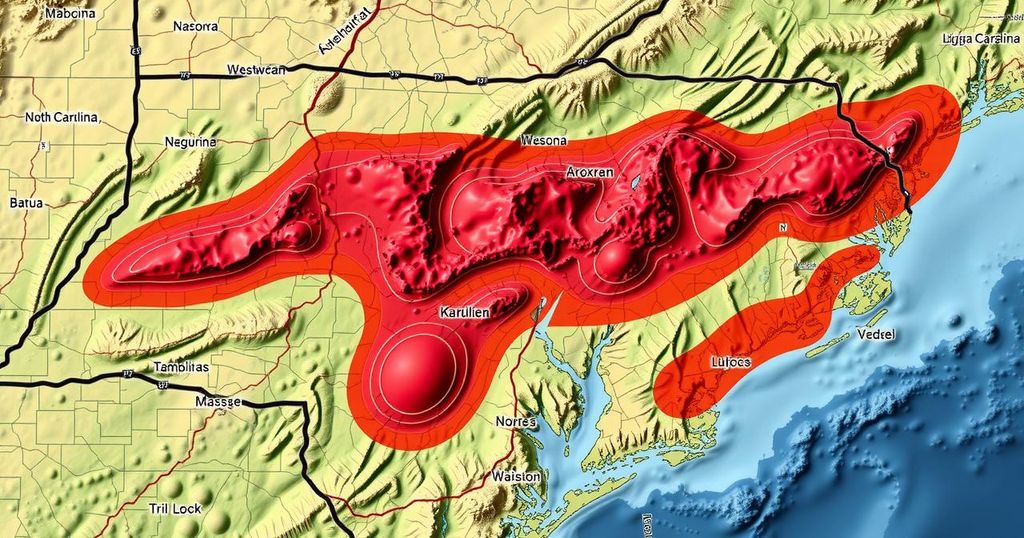Understanding North Carolina’s Earthquake History: A Focus on Major Seismic Events
North Carolina has experienced several earthquakes of note, with the largest occurring in 1916 near Skyland at a magnitude of 5.5. Recent activity includes a quake in Bryson City on November 4, 2023. Although less frequent than in other states, North Carolina has had notable seismic events, particularly in the western part of the state.
In the realm of seismic activity, North Carolina has a storied history of earthquakes, though they are significantly less frequent and intense than in states such as California. Of particular note, the largest earthquake recorded in North Carolina occurred on February 21, 1916, near Skyland, and was assigned a magnitude of 5.5 by the North Carolina Department of Environmental Quality (NCDEQ). This earthquake was felt across an extensive area, exceeding 200,000 square miles, impacting residents in states including South Carolina, Tennessee, and Virginia.
In addition to the historic quake of 1916, several other notable earthquakes have been registered in the state, particularly in the western regions. The following significant earthquakes in North Carolina, with magnitudes of 3.5 and higher, have been documented: a seismic event on July 8, 1926, in Mitchell County measuring 5.2; the Sparta earthquake on August 9, 2020, with a magnitude of 5.1; and the earlier Wilkesboro event in 1861, also measuring 5.1. According to the NCDEQ, the scale of earthquake detection ranges from mild tremors, which many may not perceive, to strong shakes that awaken many individuals.
The most recent earthquake occurred on November 4, 2023, in Bryson City, underscoring the ongoing geological activity in the area. While North Carolinians may not experience major seismic events like those in more quake-prone regions, it is evident that the state has a rich history of earthquakes, with many concentrated in the western part of the state, warranting awareness and preparedness among residents.
Earthquake activity varies significantly across the United States, with certain areas such as California experiencing far more frequent and severe seismic events. North Carolina is not typically associated with strong earthquakes, yet the state has a history of notable seismic occurrences. The impact of these earthquakes can reach far beyond their epicenters, affecting vast regions and reminding residents of the underlying geological dynamics at play. Understanding the state’s seismic history can help prepare local communities for future events, no matter how infrequent.
In summary, while North Carolina is not recognized for frequent large earthquakes, its seismic history contains significant events that merit attention. The largest recorded earthquake in the state, occurring in 1916, and other notable quakes illustrate the geological activity that can affect the region. This information serves as a reminder of the importance of earthquake preparedness even in areas where such events are relatively rare, particularly in the western regions of the state.
Original Source: www.citizen-times.com




Post Comment